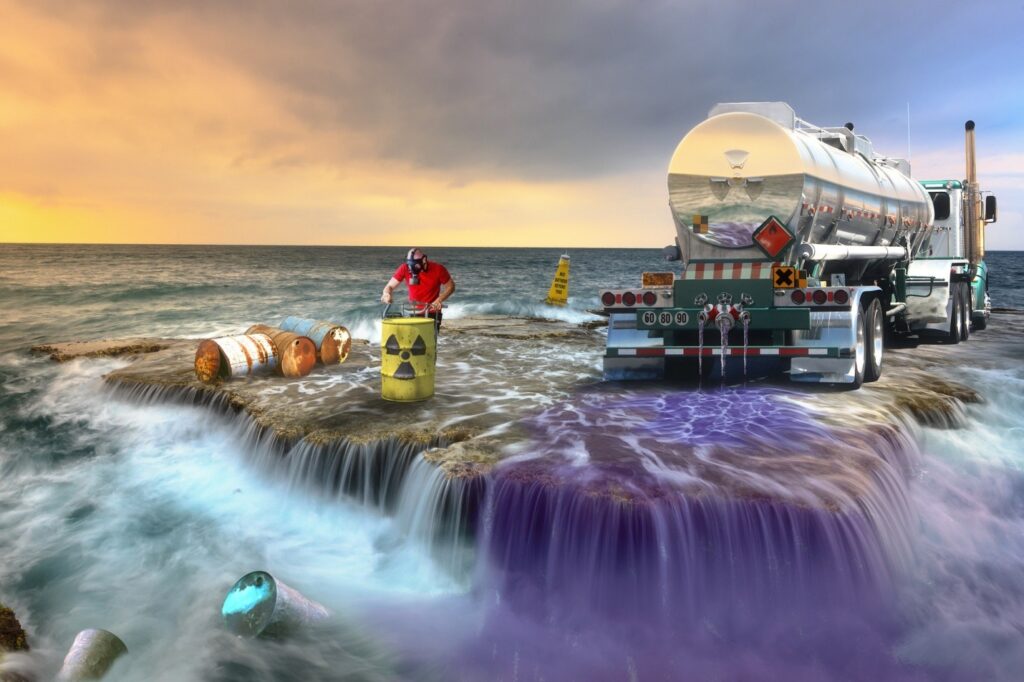Little Known Questions About Reclaim Waste.
Reclaim Waste Fundamentals Explained
Table of ContentsA Biased View of Reclaim WasteThe Reclaim Waste IdeasA Biased View of Reclaim WasteReclaim Waste Fundamentals ExplainedWhat Does Reclaim Waste Mean?
Explore the types, events, and forms of liquid waste. Domestic sewer waste describes the waste and items from a household sewage-disposal tank. This kind of waste is produced by humans in homes, colleges, and other buildings. This only includes sewage-disposal tanks that have a drain field. The proper management and disposal of domestic sewer waste call for liquid waste to be moved to a sewage treatment plant where the appropriate techniques and tools are used to purify and dispose of waste.
Industrial waste often includes prospective risks, such as combustible materials or a blend of fluid and strong waste products, and requires an extra sophisticated and detailed disposal procedure. The disposal of business waste generally involves the purification of waste prior to transport to ensure secure and proper disposal. Industrial waste is created from results and overflow of commercial procedures and manufacturing.
This kind of waste can not make use of the same sewage monitoring transportation or processes as septic or business liquids. The hazardous waste monitoring procedure calls for the assessment and testing of liquid waste before it undertakes the disposal process (liquid waste disposal melbourne). Runoff waste is the fluid waste that originates from runoff and excess stormwater in very populated areas or cities
Overflow waste can cause contamination and flooding otherwise managed correctly. Find out more about sewer cleaning and waste management. Ensuring proper waste monitoring can avoid disasters and lower ecological damage. Both people in household settings and experts in industrial or production industries can gain from comprehending the procedures and regulations of liquid waste management.
Examine This Report about Reclaim Waste
Call PROS Solutions today to discover concerning our waste administration and disposal services and the proper methods to care for the liquid waste you produce.
(https://hearthis.at/leon-aube/set/reclaim-waste/)Do you recognize what takes place to your water when you draw the plug, purge the bathroom or drain the washing device? No? Well, it deserves understanding. This supposed 'wastewater' is not just an important source however, after therapy, will certainly be launched to our land, waterways or the sea. Used water from bathrooms, showers, bathrooms, kitchen area sinks, washings and industrial procedures is referred to as wastewater.

water made use of to cool down machinery or tidy plant and equipment). Stormwater, a form of wastewater, is drainage that streams from farming and metropolitan locations such as roofing systems, parks, yards, roadways, courses and seamless gutters into stormwater drains pipes, after rain. Stormwater moves unattended straight to neighborhood creeks or rivers, eventually reaching the ocean.
More About Reclaim Waste
In Queensland, the majority of wastewater is dealt with at sewer therapy plants. Wastewater is transferred from domestic or commercial websites with a system of drains and pump terminals, understood as sewerage reticulation, to a sewage treatment plant.
The Department of Natural Resources advises city governments about managing, operating and preserving sewage systems and therapy plants. In unsewered areas, city governments might require owners to mount specific or home sewer therapy systems to deal with domestic wastewater from bathrooms, kitchens, washrooms and laundries. The Division of Natural Resources authorizes using household systems when they are verified to be efficient.
Many stormwater obtains no treatment. In some brand-new communities, therapy of some stormwater to get rid of clutter, sand and crushed rock has started making use of gross contaminant traps. Wastewater therapy takes place in four phases: Gets rid of strong issue. Bigger solids, such as plastics and various other items mistakenly discharged to sewers, are gotten rid of when wastewater is gone through screens.
Utilizes tiny living organisms knows as micro-organisms to damage down and remove continuing to be dissolved wastes and great fragments. Micro-organisms and wastes are integrated in the sludge.
Getting The Reclaim Waste To Work
Nutrient elimination is not readily available at all sewer treatment plants since it needs pricey specialist devices. It is becoming a lot more common in Queensland. Clear liquid effluent produced after treatment may still consist of disease-causing straight from the source micro-organisms. If this effluent is launched into rivers such as rivers or the sea, the micro-organisms will at some point die out.

This generally implies wastewater has to be treated or impurities gotten rid of prior to it can be discharged to waterways. Most wastewater moves into the sewerage system. Under the Act, neighborhood governments administer authorizations and permits for environmentally relevant activities (Periods) entailing wastewater launches that may have a regional effect. The department carries out authorizations and permits to ERAs including wastewater releases that might have a local or statewide effect.
Reclaim Waste for Dummies
Or else, examples are taken for research laboratory evaluation. Usually lots of examinations are required to establish the levels of each of the various pollutants such as oils, heavy metals and chemicals in water. Tracking gives valid details concerning water top quality and can validate that permit problems are being satisfied. The information acquired with tracking provides the basis for making water quality decisions.